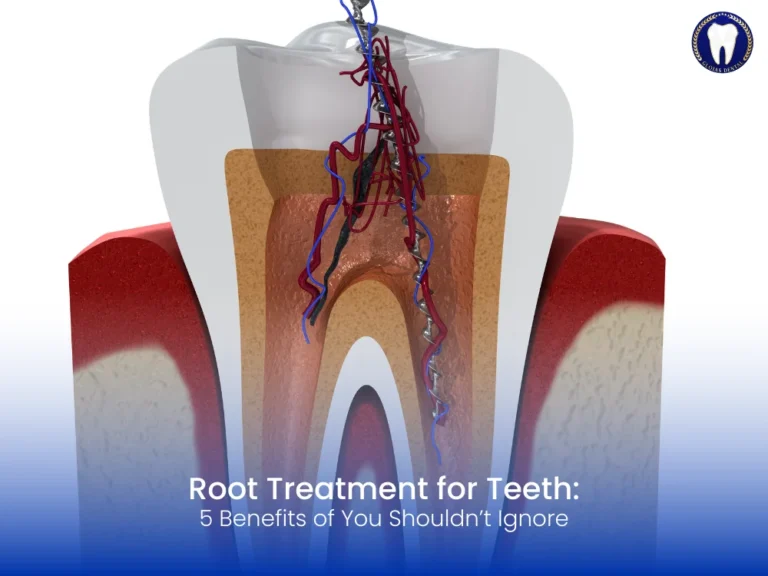If you’ve ever experienced a deep, throbbing toothache, you understand how it can disrupt your entire life. When the inside of a tooth becomes infected or inflamed, root treatment for teeth—commonly known as a root canal—is often the best solution to relieve pain and save your natural tooth.
Root treatment for teeth is a proven dental procedure that restores oral health, prevents tooth loss, and eliminates infection from the roots of your teeth. While it may have a scary reputation, the reality is far from the myths. With modern dental technology and anesthetics, the procedure is relatively quick, pain-free, and highly effective.
Let’s dive deep into what root treatment for teeth involves and why it’s one of the most valuable dental procedures today.
What Is Root Treatment for Teeth?
Root treatment for teeth, also called endodontic therapy or a root canal, is a dental procedure designed to eliminate bacteria from the infected root canal, prevent reinfection, and save the natural tooth. It becomes necessary when the pulp—the soft tissue inside the root canal—becomes inflamed or infected due to deep decay, cracked teeth, or repeated dental procedures.
Why You Might Need Root Treatment for Teeth
Signs You Need a Root Canal
If you’re experiencing any of the following symptoms, you might need root treatment for teeth:
- Severe toothache pain while chewing or applying pressure
- Prolonged sensitivity to hot or cold
- Discoloration or darkening of the tooth
- Swelling and tenderness in nearby gums
- A recurring pimple on the gums
Ignoring these symptoms could lead to the spread of infection and even tooth loss.
The Step-by-Step Process of Root Treatment for Teeth
Diagnosis and Preparation
The process begins with an X-ray to examine the shape of the root canals and determine the extent of infection.
Numbing the Area
Local anesthesia is administered to numb the area completely. Patients usually report little to no discomfort during the procedure.
Cleaning the Canal
The dentist creates an opening in the crown of the tooth and removes the infected pulp. The root canal is then cleaned, shaped, and disinfected.
Filling and Sealing
After cleaning, the empty canals are filled with a rubber-like material called gutta-percha and sealed with adhesive cement to prevent future infections.
Restoration
Usually, a crown is placed on the tooth afterward to restore its strength and functionality.
Benefits of Root Treatment for Teeth
Pain Relief
The primary goal of root treatment for teeth is to alleviate the severe pain caused by infection. Patients often feel immediate relief after the procedure.
Preserves Natural Teeth
Instead of extracting the tooth, a root canal saves it—maintaining your natural smile and dental alignment.
Prevents Spread of Infection
Removing the infected pulp and disinfecting the area stops the bacteria from spreading to surrounding tissues.
Improved Oral Health
With the infected tooth treated and sealed, your overall oral health improves, reducing the risk of future dental complications.
High Success Rate
Modern root canals boast a success rate of over 95%, making them one of the most effective dental treatments.
Myths vs. Facts About Root Treatment for Teeth
There’s a lot of misinformation surrounding root canals. Let’s debunk some common myths:
- Myth: Root canals are extremely painful.
Fact: With modern anesthetics and techniques, they’re no more painful than getting a filling. - Myth: It’s better to remove a tooth than get a root canal.
Fact: Saving your natural tooth has many advantages, including better chewing function and appearance. - Myth: Root canals cause illness.
Fact: There is no scientific evidence linking root canal treatment to systemic diseases.
How Much Does Root Treatment for Teeth Cost?
The cost of root treatment for teeth depends on several factors, such as the tooth’s location, the complexity of the procedure, and whether a specialist (endodontist) performs it. On average:
- Front Teeth: $300 – $1,500
- Premolars: $400 – $1,800
- Molars: $500 – $2,000
Dental insurance often covers a portion of the cost.
Post-Treatment Care for Root Treated Teeth
Immediately After the Procedure
- Avoid chewing on the treated side until the numbness wears off.
- Stick to soft foods and avoid extremely hot or cold items.
- Take prescribed antibiotics or pain relievers if needed.
Long-Term Maintenance
- Maintain good oral hygiene—brushing, flossing, and regular dental checkups.
- Protect the restored tooth with a dental crown.
- Avoid chewing hard items like ice or pens.
How Long Does a Root Treated Tooth Last?
With proper care, a tooth that has undergone root treatment can last a lifetime. However, the key to longevity is proper dental hygiene and follow-up dental visits.
Who Performs Root Treatment for Teeth?
General dentists can perform root canals, especially on front teeth with simpler root structures. For more complex cases, especially with molars, an endodontist—a specialist in root canal therapy—is recommended.
Is Root Treatment for Teeth Suitable for Everyone?
Not always. In cases where the tooth is severely decayed or the bone around the tooth is severely damaged, extraction might be the better option. A thorough dental examination will determine the best course of action.
Frequently Asked Questions
1. Is root treatment for teeth painful?
Thanks to local anesthesia and modern technology, the procedure is typically painless. You might feel minor discomfort afterward, which can be managed with medication.
2. How long does a root canal take?
A root canal usually takes 1–2 visits of about 60–90 minutes each, depending on the complexity.
3. Do I always need a crown after root treatment?
Most back teeth require a crown to protect the structure. Front teeth may not need one if enough natural tooth structure remains.
4. Can a root treated tooth get infected again?
Though rare, reinfection can happen. This may require retreatment or even surgical intervention.
5. Is there an alternative to root treatment for teeth?
The only real alternative is tooth extraction, which can lead to other dental issues if not replaced with an implant or bridge.
6. What happens if I delay root treatment?
Delaying can worsen the infection, increase pain, and eventually lead to tooth loss or systemic health issues.

